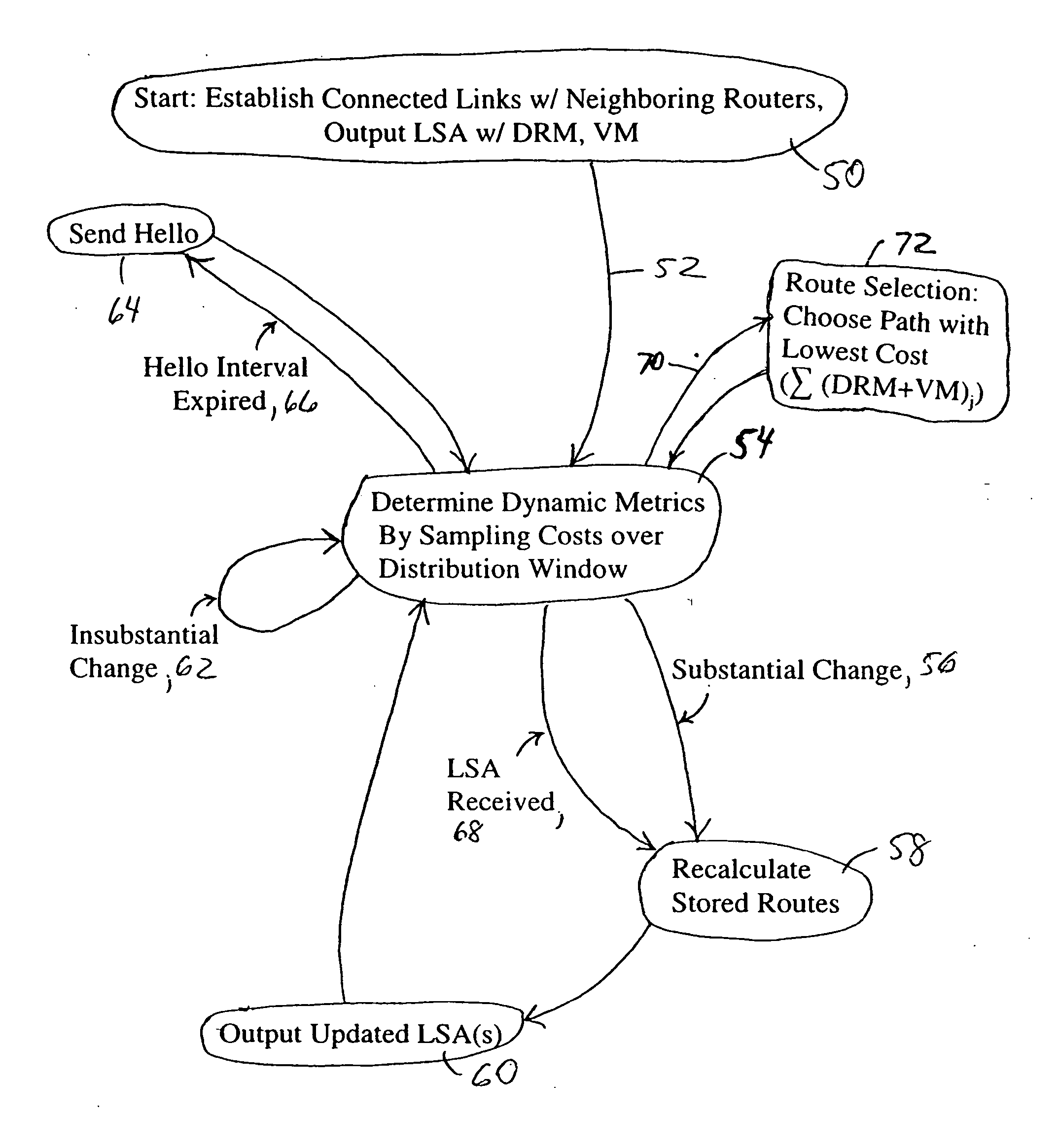Link state advertisements specifying dynamic routing metrics and associated variation metrics and selective distribution thereof
a dynamic routing and link state technology, applied in the field of link state routing protocols, can solve the problems of poor model for connecting to a wide area network such as the internet, the inability to model and quantify the characteristics of wireless propagation between a wireless transmission source and a receiver, and the rapid and unpredictability of the network's wireless topology
- Summary
- Abstract
- Description
- Claims
- Application Information
AI Technical Summary
Benefits of technology
Problems solved by technology
Method used
Image
Examples
Embodiment Construction
[0025]FIG. 1 is a diagram illustrating a network 10 having routers 12 configured for establishing and maintaining routes between each other based on distribution of link state advertisement messages 14, according to an embodiment of the present invention. Each router 12 includes a plurality of network interfaces 16, and a routing resource 18. Each network interface 16 is configured for sending and receiving data packets, including link state advertisement messages 14, via a connected link 20 to and from a connected router 12.
[0026] As recognized in the art, the routing resource 18 in each router 12 is configured for executing a prescribed link state routing protocol, for example OSPFv2 according to RFC 2328 or Optimized Link State Routing Protocol (OLSR) according to RFC 3626, based on exchanging the link state advertisement messages 14 with adjacent routers 12, where each link state advertisement message 14 describes one of the connected links 20 of the router 12 in terms of an as...
PUM
 Login to View More
Login to View More Abstract
Description
Claims
Application Information
 Login to View More
Login to View More - R&D
- Intellectual Property
- Life Sciences
- Materials
- Tech Scout
- Unparalleled Data Quality
- Higher Quality Content
- 60% Fewer Hallucinations
Browse by: Latest US Patents, China's latest patents, Technical Efficacy Thesaurus, Application Domain, Technology Topic, Popular Technical Reports.
© 2025 PatSnap. All rights reserved.Legal|Privacy policy|Modern Slavery Act Transparency Statement|Sitemap|About US| Contact US: help@patsnap.com



